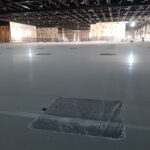Composites can help project owners and end users save construction costs and create a durable, sustainable 21st century infrastructure that supports economic growth, according to the NIST report. One of the ways ACMA advocates for the interests of the composites community is by working with policymakers, regulators and federal agencies to foster policies and standards that grow the industry. “As a leader in composites industry advocacy and standards development, ACMA was proud to support the development of this important project,” said Tom Dobbins.
During the workshop, designers, engineers, ACMA member manufacturers, researchers, owners and end-users identified barriers that must be overcome to enable the adoption of composite technology. The attendees developed a preliminary roadmap with three proposed solutions to those barriers. If carried out, they could lead to the adoption of Fiber Reinforced Polymers (FRPs) that are more reliable, durable and cost-effective than current infrastructure material options.
The proposals included:
• Improved durability testing: The development of a five-year program to establish reliable design tools based on new durability standards. The tools would be available to all stakeholders through an online data portal.
• Design Data Clearinghouse: A desire for a way to gather, curate and disseminate design data to engineers.
• Education and Training: The need to create a constant stream of education and training materials for universities and industrial schools that have composite training and certification programs.
“We look forward to working with the composites industry, other government agencies and university partners to address the needs identified by the workshop participants,” commented Jeffrey Gilman, leader of the composites project at NIST.
The Roadmapping Workshop Report is available here












